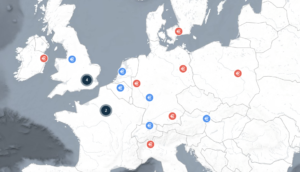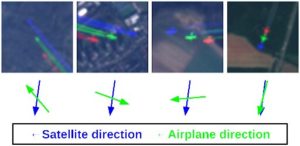
European Space Agency Uses AI, Satellites to Monitor Pandemic Air Traffic

Satellite imagery provides exceptional coverage of often difficult-to-monitor phenomena. However, the sheer quantity of the data and the low resolution of many specific objects makes it difficult to analyze satellite data with traditional software, let alone by hand. As a result, AI has been used to process satellite data and identify everything ranging from deforestation to volcanic activity – and now, the European Space Agency (ESA) is using AI to track planes.
The new project is a result of a contest earlier this year where the ESA asked the public to brainstorm how high-quality Copernicus Sentinel-2 satellite data could be used to monitor the effects of the COVID-19 pandemic. Mauricio Pamplona Segundo, a researcher from the University of South Florida (USF), worked with his team to leverage the Copernicus data to understand how the pandemic had changed air traffic in Europe.
The researchers began by using the EuroDataCube platform, which provides Earth observation data, to pull satellite data from 30 of the most-visited European airports (such as Heathrow and Charles de Gaulle). Then, they went to work on recognizing the airplanes in the sky.

Airport detection using Sentinel-2 imagery, made possible by contained modified Copernicus data processed by EuroDataCube.
“The results are achieved due to the distinct ‘rainbow pattern’ created by the airplanes that fly at a high-altitude of the aircraft relative to the ground and the slight temporal, or spatial, differences in the spectral bands of the Multi-Spectral Imager camera,” Maurício Pamplona Segundo explained. “A deep learning model was then trained to detect these patterns in the individual Sentinel-2 images. This kind of detection exploits the unique appearance of high-altitude moving objects visible in Sentinel-2 images.”
After the results were validated using real-world flight statistics and maps, the researchers compared this year’s numbers to the previous year’s. The conclusions were striking: in the first few months of the pandemic, air traffic had plummeted up to 90% for most of the airports studied compared to the same months in 2019.
The air traffic data is now available via ESA’s Rapid Action on Coronavirus and EO (RACE) portal here. Through the portal, users can view monthly trends in air traffic by airport with overlays indicating when there were strong or moderate COVID-19 restrictions in place. The portal also offers a variety of other indicators of how COVID-19 has shaken Europe’s economic and social indicators, such as changes in truck traffic, commercial activity, air quality, water quality, agricultural outputs, and more. All of the data is available to the public and easily exportable.
Header image: the air traffic interface map from ESA’s RACE platform.



























